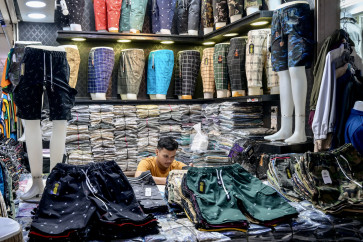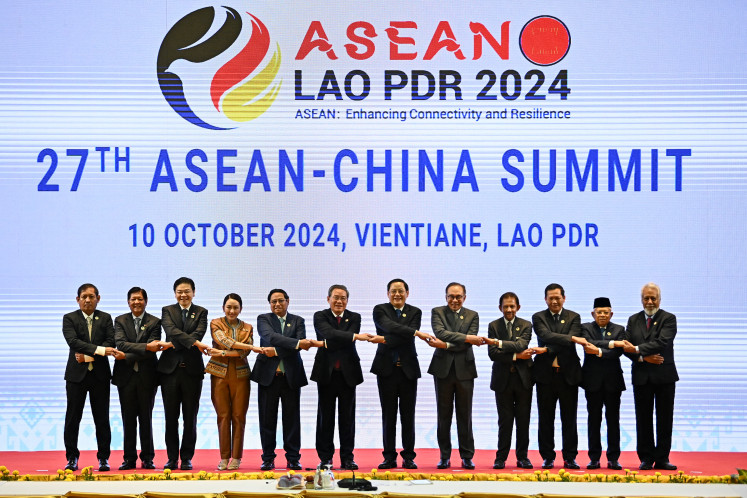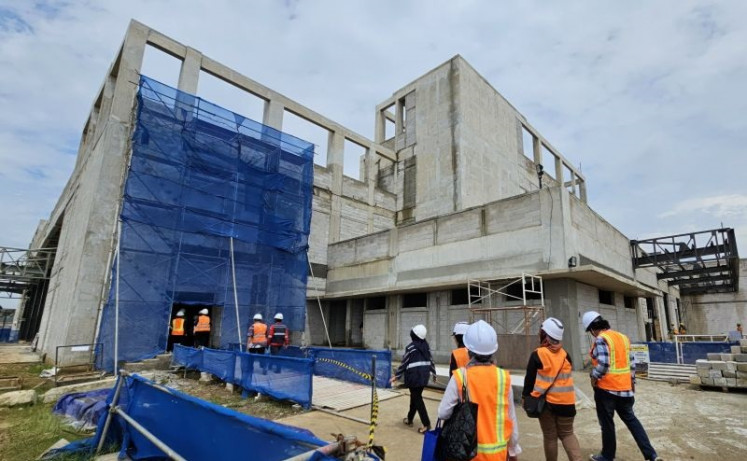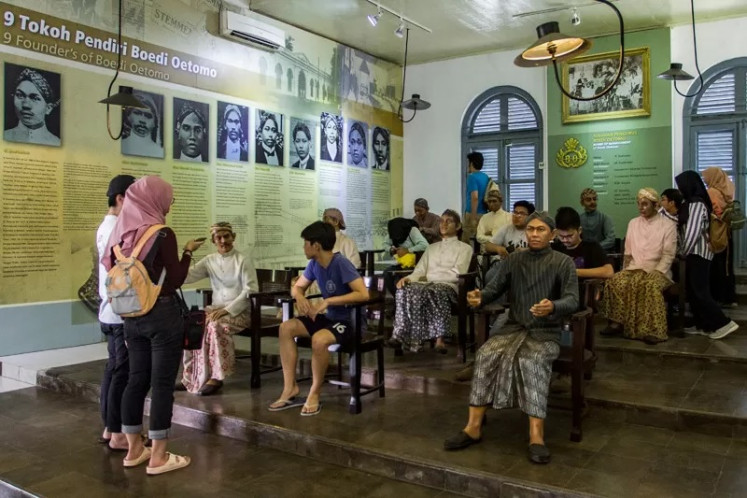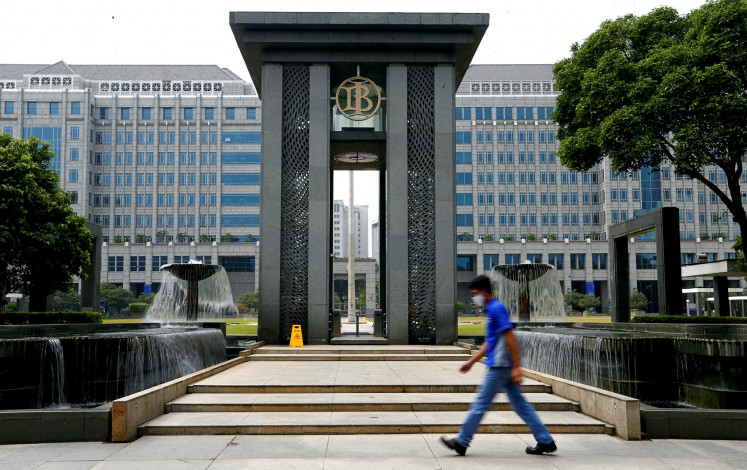The overlooked role of sanitation in development
“In rural areas, where sanitation at schools is wanting, female students are more likely to be absent during their menstrual days."
Change text size
Gift Premium Articles
to Anyone
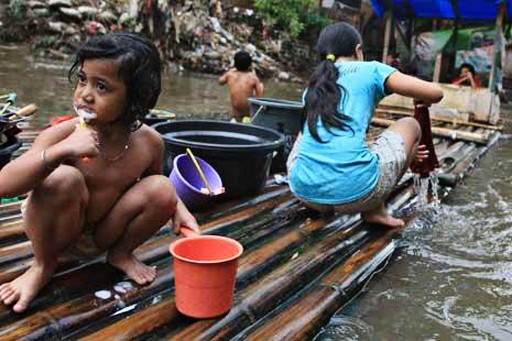 A small child brushes her teeth with river water. Considerable numbers of Indonesian people continue to lack adequate access to clean water and basic sanitation. (Courtesy of the Public Works and Public Housing Ministry/-)
A small child brushes her teeth with river water. Considerable numbers of Indonesian people continue to lack adequate access to clean water and basic sanitation. (Courtesy of the Public Works and Public Housing Ministry/-)
G
one are the days of measuring a country’s development solely in terms of economic performance. In an archipelagic country like Indonesia, emphasis on economic growth risks encouraging greater disparity between densely populated areas and isolated regions. Departing from this, the National Development Planning Agency (Bappenas) has adopted a new vision for developing Indonesia. A fresh perspective it was, especially in reflecting how far we have (not) prospered as a nation after 73 years of independence.
Addressing the Indonesian Development Forum in July, National Development Planning Minister Bambang Brodjonegoro exposed the stark contrast in development between Indonesia’s western and eastern regions.
“Jakarta’s Human Development Index [HDI], for example, is similar to that of the Russian Federation, but that of the neighboring province of Banten is similar to Libya’s. West Java is similar to Uzbekistan, Lampung is similar to the Philippines, and West Papua is similar to India,” the minister said.
Indonesia’s HDI improved to 70.81 in 2018. This number is “high” according to the United Nations Development Program. Yet, Greater Jakarta is the only province with an HDI that is “very high”. Most western provinces are “high”, while eastern provinces dominate the “middle” HDI category. Papua, meanwhile, is the only province with a “low” HDI reading.
Last year, the first-ever development forum addressed inequality as an important aspect of growth. Now, the forum strives to highlight HDI as the measuring tool for eradicating inequality, while noting the importance of provincial data and innovation. Thus, tackling regional disparities across the archipelago is rightfully the theme of this year’s development forum.
Among various options to close the regional development gap, delivering basic services is one of the main pathways. Precisely defining the elements of basic services is still quite tricky. Access to sanitation or proper toilets, for example, often gets overlooked when discussing health and education. As trivial as it may seem, sanitation is closely related with school participation rates.
“In rural areas, where sanitation at schools is wanting, female students are more likely to be absent during their menstrual days. They are not comfortable with changing sanitary pads at school due to the poor hygiene,” explained the senior water and sanitation specialist of the World Bank in Indonesia, Deviariandy Setiawan. “Such conditions are unimaginable for those living in more privileged areas.”
Deputy National Development Planning Minister Subandi disclosed the importance of proper sanitation in reducing the risk of stunting.
“We always thought [stunting] was solely the responsibility of the Health Ministry,” said Subandi. “It turns out that, if access to sanitation and clean water is lacking, that translates into inadequate nutrition for our children, too.”
Deviariandy echoed widespread concern over the lack of access to proper sanitation, which has contributed to diarrhea. When children in their first 1,000 days of life suffer from diarrhea, their digestive system will absorb less nutrition. As a result, their cerebral development will be hampered, as well as their physical growth.
Despite increased access to sanitation facilities and clean water being one of the global Sustainable Development Goals for 2030, investment in sanitation access is still unpopular when compared to the investment interest in infrastructure.
As a cooperative that invests heavily on building decent toilets for low-income citizens, a cooperative called the Koperasi Syariah Benteng Mikro Indonesia is all too familiar with this phenomenon. Kamaruddin Batubara, its president director, admitted that he had struggled to woo domestic banks to fund his toilet-building projects. Until now, the funding he has received is from Russia, the Netherlands and the United States.
“Banks tend to consider investing in sanitation unattractive,” said Kamaruddin.
Around 5 million more toilets are still needed to fully eradicate open defecation in Indonesia, according to Villages, Disadvantaged Regions and Transmigration Minister Eko Putro Sandjojo. Up until 2017, transfers from the central government under the village fund program have been used to build 112,003 toilets.
The village fund transfers, amounting to Rp 60 trillion (US$4,021 billion) in 2018, could contribute greatly to meeting these needs. Yet at the village level, the allocation of the funds relies heavily on the interests of village heads.
In Indonesia’s institutional model, governors, mayors and regents play a key role in relaying the need for proper sanitation to village heads.
In Central Sulawesi, North Luwu regency is among those that succeeded in utilizing village funds for sanitation needs. With the encouragement of Regent Indah Putri Indriani, 10 percent of the village funds have been allocated to building toilets.
“In developing a region, it is impossible to build all aspects at once,” shared Indah. “We need to set the right priorities. In North Luwu, sanitation is a priority.”
Despite the success in using village funds, Indah admitted that relying on “conventional” funding would take time. Instead of solely waiting for state budget, regional budget or even village fund transfers, North Luwu regency also sought funding from philanthropy foundations as well as corporate social responsibility schemes from both state-owned and private enterprises.
National access to proper sanitation currently stands at 77 percent, far behind the target of 100 percent for 2019. To close the gap, Bambang has offered a novel perspective on funding prioritization.
“We could pursue two tracks in funding sanitation,” the minister proposed. “Besides understanding sanitation as a basic service, we should not forget that sanitation is also a key aspect in eradicating stunting. Thus, we could utilize budget funds related to the stunting issue as well.”
Understanding the correlation of sanitation with other development goals might be the key here. While largely invisible, poor sanitation is the root of various welfare and health-related problems. Reluctance to address it is understandable, since it is demanding in terms of both infrastructure and funding. Yet, if we only act upon issues that are currently in the whirlwind of public attention and ignore the need for radical change, what exactly does that say about us as a nation?
***
The writer works at the Urban Sanitation Development Program, a technical assistance project for Accelerated Sanitation Development for Human Settlements Program (PPSP) at the National Development Planning Agency (Bappenas).




